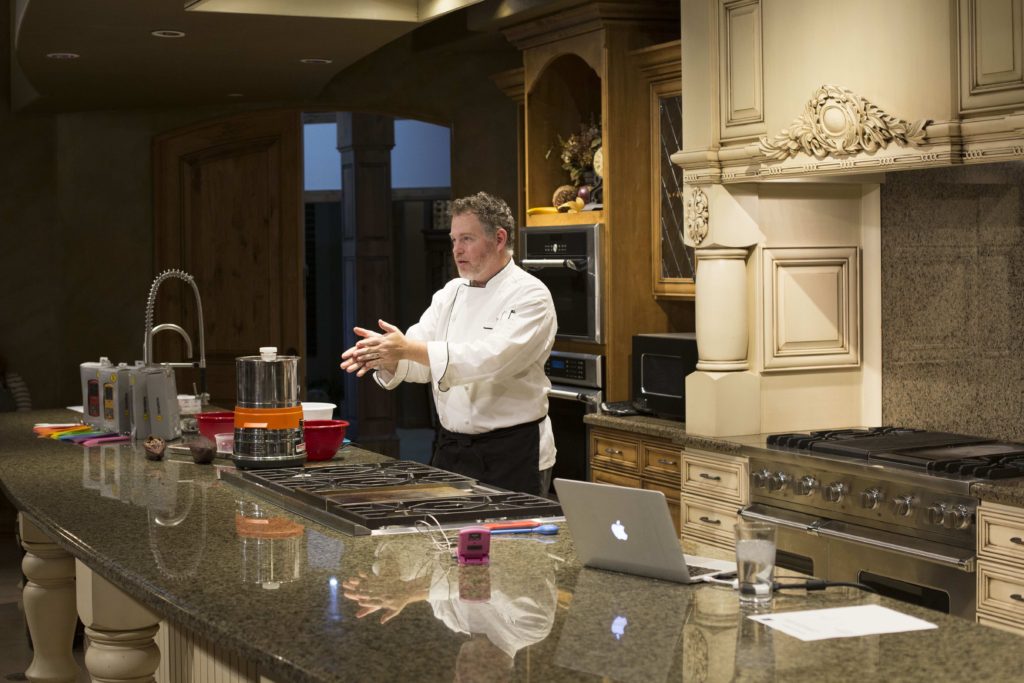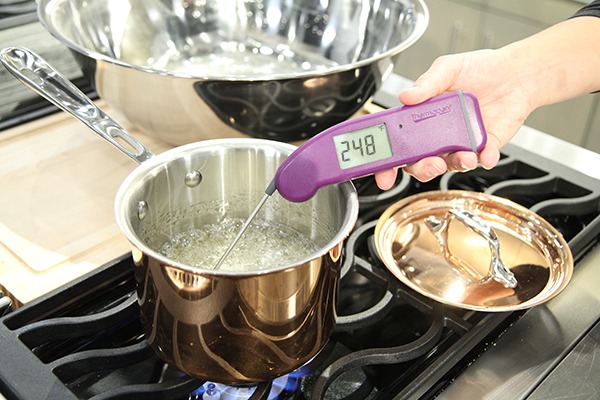Do you know that feeling when you try something new, and it’s so surprisingly delicious and fresh and you can’t help but wonder where in the world it’s been your whole life? You kind of feel like you’ve missed out on years of living without this. It sounds dramatic, but this passion fruit caramel had us all reeling in wonder as to why we’d never had it before.

Chef Martin Earl, from Thermoworks, gave us the run down on caramel and creating the perfect caramel time after time. The secret? Temperature. Exact, precise calculated temperature is exactly what your caramel has been missing!

Get yourself an instant read thermometer (we LOVE Thermoworks) and your candy making life will suddenly transform. Making candies (meat & bread) is much more successful with the right tools.
This refreshingly delicious caramel has a tart undertone that makes you pucker just enough to want to keep eating it again and again and again. Here are a few tips from America’s Test Kitchen to create the perfect batch of caramels: Start with your sugar. In a high-sided sauce pan combine sugar, corn syrup and butter and cook over medium-high heat. One of the dangers of making caramel is crystallization. To reduce this risk, do not stir the mixture. You don’t want any sugar granules sticking to the side of the pot. Allow the sugar to cook until it develops a faint golden color and registers 300°F. The Super-Fast Thermapen is ideal for monitoring temperatures when making candy because its temperature readings are fast and very accurate (±.7°F). Once at 300°F, lower the heat to medium-low and gently swirl the pan periodically as you continue to cook the mixture. Cooking the sugar slower allows you to have more control as the temperatures creep higher, and reduces the chance that you’ll burn the mixture. When the mixture has reached 350°F it’s done. Another option for monitoring the temperature of your candy is with an alarm thermometer, like DOT. Attach DOT’s Pro-Series probe to the side of the pot with a pot clip and set the alarm to sound when your caramel has reached 350°F. Once at 350°F, remove the caramelized sugar from the heat and stir in the puree, baking soda, salt and vanilla. Return the pan to the heat (medium-low) and cook the caramel until it reaches *248°F – what candy experts call “Firm Ball” stage. During this step in the process it’s important that you keep stirring the caramel so it doesn’t burn. Pour the finished mixture to a pan lined with parchment paper that’s been coated with nonstick spray. Smooth out the caramel in the pan and let sit at room temperature (67 to 77°F) for 1 hour. After an hour, transfer the caramel to the fridge (set to below 40°F) and allow to cool for another hour. Cut the caramel into bite size pieces and wrap them in wax paper to preserve freshness. Sarah Phillips, of Crafty Baking recommends storing them in an airtight container in a cool, dry place. The crystallization is caused as a result of the sugar crystals in the caramel becoming damp from humidity from the refrigerator or being stored at room temp and not in an air tight container. *248°F is only applicable at sea level. If you’re at a higher elevation, you need to reduce temperature by 1°F for every 500 ft above sea level. For more candy temperatures, see our candy temperature chart, here.Passion Fruit Caramel
Ingredients
Instructions
Notes
In your next batch of caramel, try adding a little passionfruit for the most surprisingly different tart, but sweet, chewy caramel treat.





2 Comments
Angie
December 8, 2019 at 11:40 pmDo you have a source for the passion fruit puree?
candaceheward
December 18, 2019 at 8:58 pmWe do sell it at Gygi, but it is only available in-store, not online.